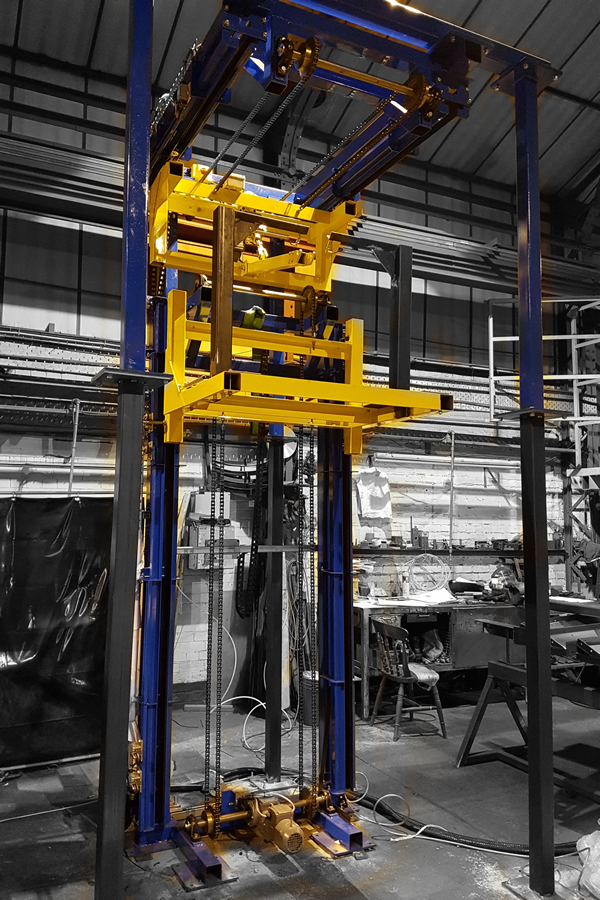Exploring the World of Elevators: Usual Concerns Dealt With by Various Lift Devices
As we navigate with the upright transport systems of modern-day buildings, lifts stand out as an essential part of our daily lives. From hydraulic elevators to grip systems and machine-room-less designs, each lift type comes with its collection of common problems.
Hydraulic Lifts
Hydraulic elevators, commonly preferred for low-rise buildings, make use of fluid stress to control the motion of the lift vehicle (lift repair companies). This system entails a hydraulic pump pushing oil into a cyndrical tube, creating the elevator to move in the preferred direction. While hydraulic elevators are understood for their smooth and silent operation, they do include their very own collection of usual issues
One widespread trouble with hydraulic lifts is oil leak. In addition, concerns with the control system, such as faulty shutoffs or a malfunctioning pump, can create disturbances in the lift's activity.
Normal upkeep and timely repair services are important to make certain the smooth performance of hydraulic lifts. By attending to these typical problems proactively, building proprietors can minimize downtime and ensure the safety and security and efficiency of their vertical transportation system.
Grip Lifts
When thinking about vertical transportation systems in structures, an additional typical type in addition to hydraulic lifts is the grip elevator. Traction lifts operate using a system of ropes and weights that relocate the elevator vehicle by gripping onto the hoist ropes. This device permits smoother and quicker vertical transport contrasted to hydraulic systems.
One of the usual problems faced by grip lifts is rope wear. The constant activity of the ropes within the grip system can result in deterioration in time, possibly triggering the elevator to breakdown or end up being unsafe for usage. Regular examinations and upkeep of the ropes are necessary to make certain the elevator's proper performance and safety.
An additional issue that grip elevators might encounter is connected to the control system. Problems with the control system can bring about issues such as irregular movement, hold-ups in response times, or perhaps complete shutdowns. Normal testing and upkeep of the control system are essential to avoid such issues and make sure the elevator's dependability.
Machine-Room-Less (MRL) Lifts

One of the essential components of MRL lifts is the small gearless traction machine that is mounted within the hoistway. This maker effectively drives the elevator auto without the demand for large equipment located in standard traction lifts. Furthermore, MRL elevators disabled platform lifts prices uk commonly utilize a counterweight system to stabilize the automobile, additional enhancing their power efficiency.
Regardless of their benefits, MRL elevators might encounter challenges connected to repair and maintenance due to the restricted room for devices installment. Accessibility for servicing elements within the shaft can be restricted, requiring specialized training for professionals. Proper maintenance timetables and regular evaluations are critical to guarantee the ongoing smooth procedure of MRL elevators.
Overloading and Weight Limitation Issues
Are lifts equipped to deal with excess weight tons successfully and safely? Overwhelming and weight limitation concerns are crucial worries in lift procedures. Elevator producers style raises with details weight capacities to guarantee traveler security and tools long life. Going beyond these weight limits can result in different issues, including mechanical failings, hold-ups, and security threats.
When lifts are strained, it places extreme stress on the motor, cable televisions, and other components, possibly creating break downs or malfunctions. Safety devices such as sensing units and overload sensors are in place to stop lifts from moving if they spot excess weight. In addition, surpassing weight limits can lead to raised energy intake and wear and tear on the lift system.
To alleviate overloading concerns, developing managers must prominently present weight limitations in elevators and inform residents on the relevance of adhering to these restrictions - lift repair companies. Routine maintenance checks by certified specialists can additionally assist make certain that elevators are running within risk-free weight criteria. By attending to overloading and weight limit problems proactively, structure owners can boost elevator security and efficiency
Electrical System Failings
Surpassing weight limitations in lifts can not just lead to mechanical concerns yet additionally possibly add to electric system failings within the lift framework. Electrical system failings are a crucial worry in elevator operation, as they can trigger unforeseen shutdowns, malfunctions, or even safety risks.
Routine we maintain lifts maintenance and examinations are vital to determine and address possible electric issues without delay, making sure the safe and reliable operation of lift systems. By adhering to weight restrictions and carrying out regular electrical system checks, structure owners can minimize the danger of electric failures in lifts.
Conclusion

Hydraulic elevators, commonly chosen for low-rise structures, utilize fluid pressure to manage the activity of the elevator auto.When thinking about upright transport systems in buildings, one more common type aside from hydraulic lifts is the grip lift. Traction elevators run using a system of ropes and weights that move the lift automobile by gripping onto the hoist ropes. Unlike standard elevators lift companies in London that need a separate device room to house the tools, MRL elevators integrate most of the parts within the shaft, removing the requirement for a dedicated maker area.In verdict, lifts face typical issues such as hydraulic breakdowns, traction system failures, and electric system problems.